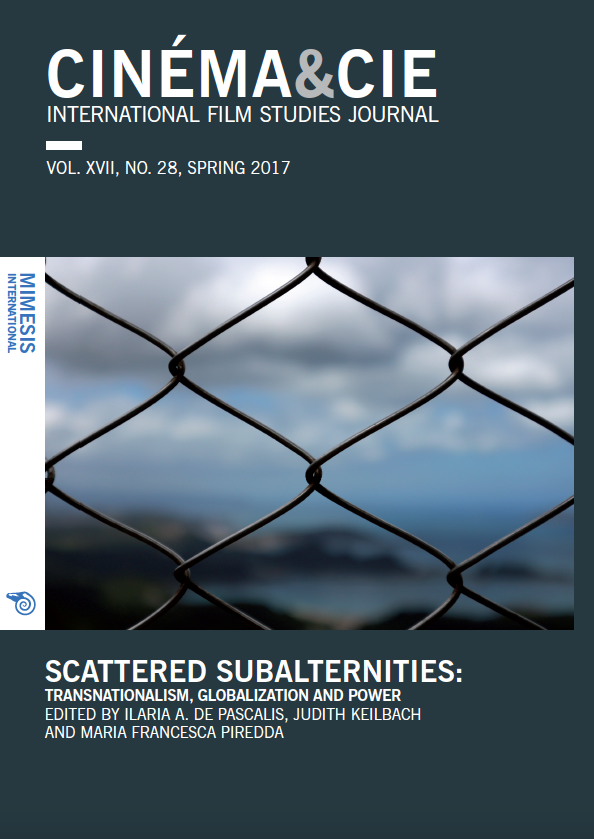Framing the Subaltern: The Reemergence of the ‘Other’ in Neoliberal Indian Popular Cinema
Abstract
The gure of the subaltern, construed primarily in terms of class difference, went missing from Indian cinema screens following the emergence of the Non- Resident Indian (NRI) protagonist in the 1990s. In the neoliberal phase post- 2000, the subaltern has resurfaced in Indian cinema narratives, positioned to be delivered by the technological know-how and entrepreneurial spirit of the foreign-returned Indian man. This paper analyzes the reemergence of this disenfranchised ‘other’ through a close reading of three mainstream Hindi lms — Swades: We, the People (Ashutosh Gowariker, 2004), Delhi 6 (Rakeysh Omprakash Mehra, 2009) and Gori Tere Pyaar Mein (Punit Malhotra, 2013). All three lms place a premium on the entrepreneurial spirit embodied by the cosmopolitan protagonist, which is facilitated by the urban educated heroine. The subaltern is transformed into the collective of ‘the people’ and subsequently denied enterprise. Within the context of cinematic representations of the subaltern since India’s independence, this portrayal of the subaltern as objects of deliverance is emblematic of Indian cinema’s neoliberal phase. Engaging with recent scholarships on Hindi cinema’s global ambitions, this paper brie y delves into the implications of the subaltern’s return to the notion of the ‘popular’ in Indian popular cinema.






